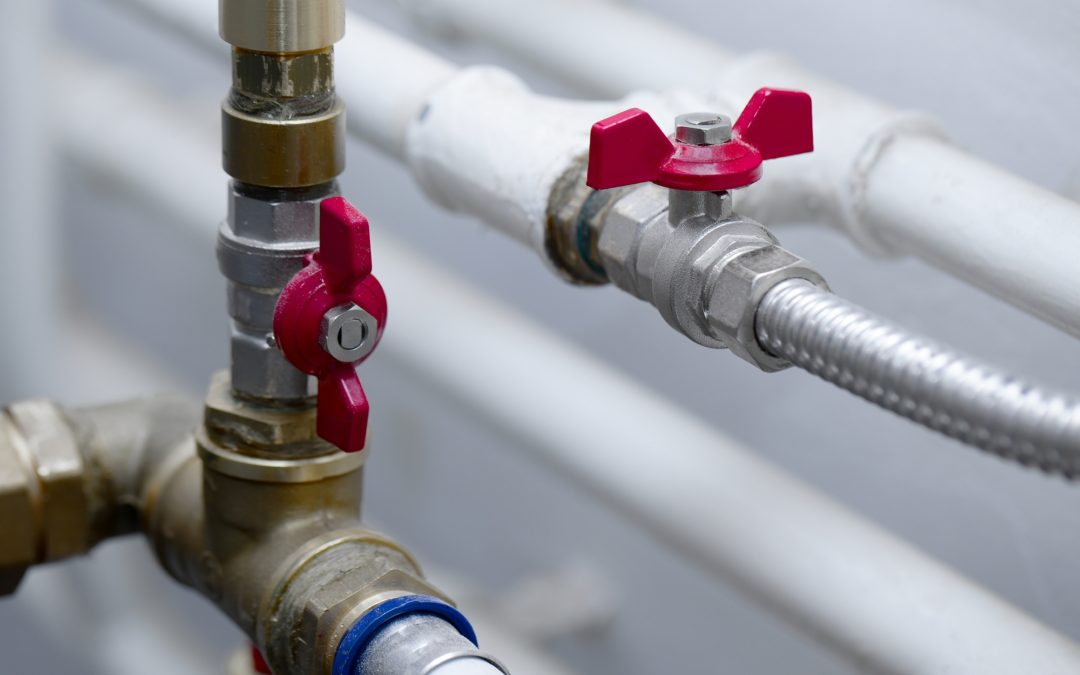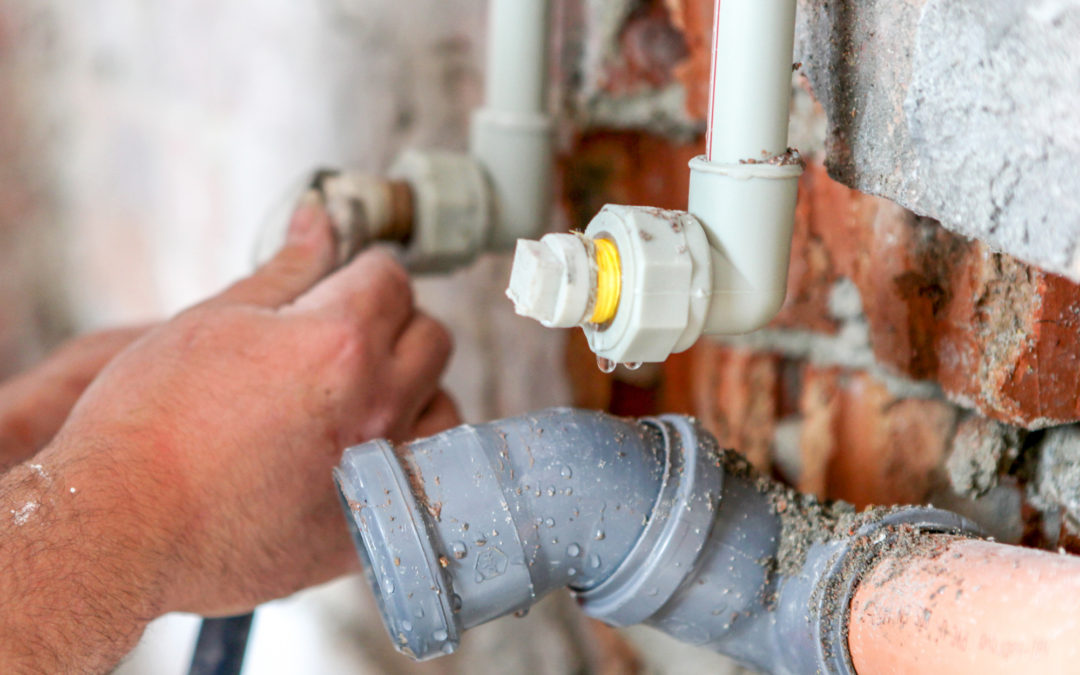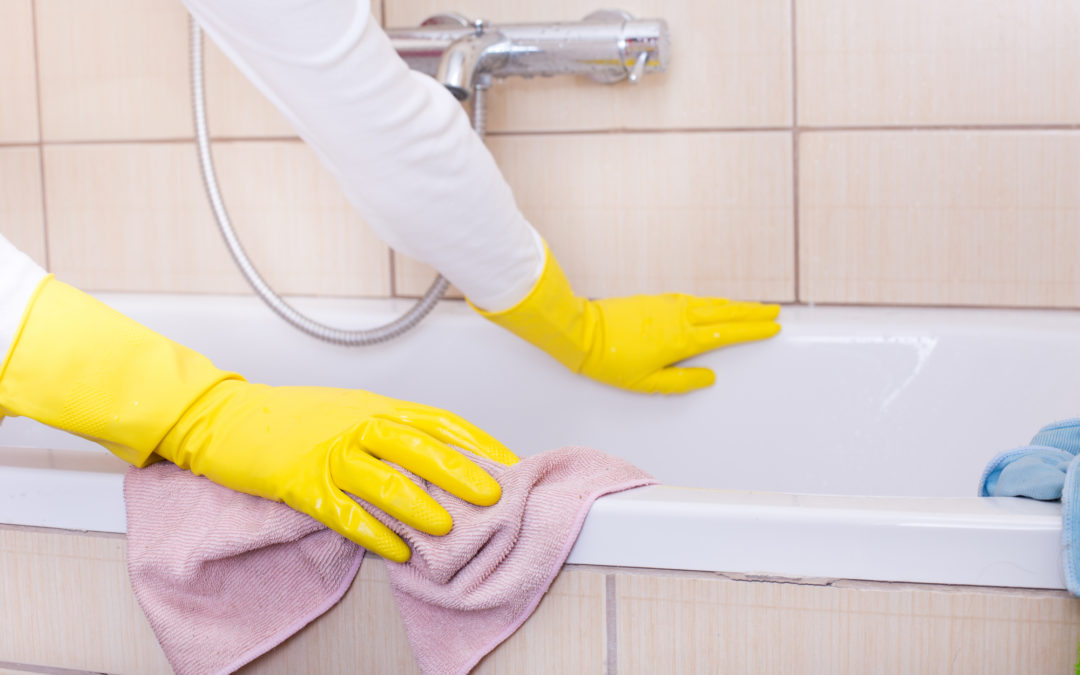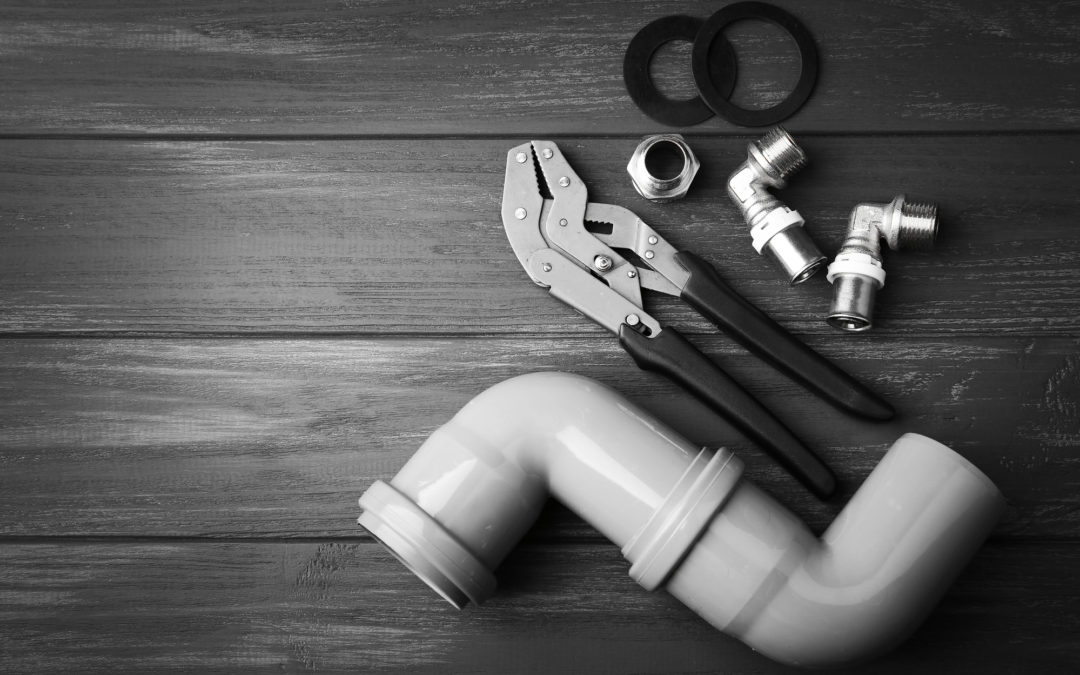
by Brandon | Jul 10, 2023 | News
As a plumbing services company, it’s essential to understand the connection between emotions and consumer choices. In today’s world where people rely heavily on the internet and social media, consumers’ buying behaviors have entirely transformed. It’s no longer about how good your services are, but how you make them feel. Emotions play a vital role in influencing a consumer’s decision to choose one plumbing service company over another. In this article, we will discuss the importance of emotions in consumer decision-making and how you can use it to your advantage.
Understanding the Role of Emotions in Buying Decisions
Emotions are an integral aspect of the decision-making process when it comes to consumer behavior. People tend to choose a plumbing service company that makes them feel valued and appreciated. It’s not just about the quality of your service but the entire experience that a customer goes through when interacting with your company. Consumers want to feel understood and heard. Therefore, it’s crucial to establish an emotional connection with your customers to influence their decision-making process.
The Connection between Trust and Emotion
Trust is the foundation of any successful business relationship. Building trust takes time, effort, and consistency. It’s crucial to establish trust with your customers to encourage loyalty and repeat business. The best way to build trust is to create an emotional connection with your customers. People tend to trust those who make them feel valued and respected. Therefore, it’s essential to establish an emotional connection with your customers to build trust. This can be achieved by displaying empathy, active listening, and asking thoughtful questions.
Using Emotional Marketing Techniques
Emotional marketing is a technique that appeals to the emotions of your customers with the intention of influencing their decision-making process. Emotions can drive consumers to make impulsive purchases or lead them to become loyal customers. The key to successful emotional marketing is to understand your target audience’s emotional drivers. This can be achieved by conducting market research and understanding your customers’ pain points, values, and motivations.
One effective emotional marketing technique is storytelling. Sharing success stories and testimonials from happy customers can make potential customers feel confident about choosing your plumbing service. It’s also important to showcase your company’s personality and values, so customers can connect with you on a personal level. This can be achieved through social media marketing, creating engaging content that shares your company’s values and highlighting your employees’ hard work and dedication.
Incorporating Emotions in Customer Service
Excellent customer service is crucial for any plumbing service company, but incorporating emotions in the customer service experience can take it to the next level. The first step is to train your employees on effective communication and empathy. Your employees should be able to communicate effectively with your customers and display empathy towards their needs and concerns. It’s crucial for employees to listen actively and ask thoughtful questions to understand the customer’s situation fully.
Another effective way to incorporate emotions in customer service is by simply saying “Thank you.” Simply thanking your customers for choosing your company and showing appreciation for their business can go a long way in building an emotional connection. Additionally, following up with customers after a service appointment to ensure their satisfaction can also create an emotional connection and increase the likelihood of repeat business.
Conclusion
In conclusion, emotions play an integral role in consumer buying decisions. Creating an emotional connection with customers is essential for building trust and encouraging loyalty. Understanding your customers’ emotional drivers and incorporating emotional marketing techniques can help influence their decision-making process. Additionally, incorporating emotions in customer service can take your business to the next level. At Ace Plumbing Repair, we understand the importance of emotions in the plumbing services industry. We strive to create an emotional connection with our customers through exceptional customer service and engaging content. If you need any plumbing services, don’t hesitate to contact us at (844) 711-1590 or visit our website at aceplumbingrepair.com.

by Brandon | Jul 10, 2023 | News
As a homeowner, it’s essential to know about the various plumbing fixtures and equipment installed in your home. Being knowledgeable of your home’s plumbing system can save you time and money in the long run, particularly when you have to fix or replace a component of your plumbing. One of the most critical aspects of your plumbing system is the valves installed throughout your property.
Valves play a crucial role in controlling the water flow and pressure in your home’s plumbing system. If you experience a leak or a burst pipe, knowing the location and function of each valve can help you to control the water damage and potentially avoid costly repairs. Here is an ultimate valve identification guide for homeowners.
1. Gate Valve
A gate valve is the most recognizable type of valve. It typically features a round or square-shaped handle that when turned, opens or closes the valve. The gate valve is an on/off valve that controls hot or cold water flow from the main line into your home. They are usually located near the main water supply connection, and they are not ideal for throttling or controlling the water pressure.
2. Ball Valve
Ball valves are an increasingly popular type of valve that features a lever-shaped handle. A quarter-turn of the handle opens or closes the valve, making them quicker to operate than gate valves. The ball valve is a full-bore valve designed to control water flow in hot and cold water pipes. They are generally seen in supply lines that provide water to individual fixtures such as sinks, showers, and bathtubs.
3. Globe Valve
Globe valves are identifiable by their spherical body shape, which consists of two halves that divide vertically. These halves are joined together by a spindle with a threaded stem that moves up and down, allowing water flow in a controlled manner. Globe valves are ideal for use in areas where more precise water flow control is required, such as on irrigation lines.
4. Angle Valve
Angle valves, also called stop valves, consist of two parts connected at a right angle with a spindle that opens and closes the valve stem. They are typically used to control the plumbing supply line’s water flow to individual fixtures, such as toilets and sinks. They are easily identifiable, usually located under the sink, near the toilet or in a crawlspace.
5. Pressure-Reducing Valve
A pressure-reducing valve (PRV) helps regulate and reduce water pressure coming into your home. High water pressure can damage your home’s plumbing system, cause leaks, burst pipes, or even lead to fixture failure. PRVs are essential for homes with high water pressure. The PRV valve is usually connected to your home’s water meter or the main location where the water supply enters your home. They are easily identified by their cylindrical shape and a bell-shaped cover.
6. Check Valve
Check valves allow water to flow in one direction only. They are an essential part of your home’s plumbing system, particularly for backflow prevention. A check valve prevents wastewater from flowing back into your clean water supply. They are typically installed on the main supply line where the water enters your home. Check valves are usually located near the water meter.
7. Air Valve
Air valves ensure air gets released from the water supply line, protecting the plumbing system from damage caused by high-pressure air pockets. These valves are usually installed in the highest points of a plumbing system to expedite the release of air. Air valves are easy to identify, as they are generally sited on top of vertical pipes installed by themselves or screwed onto the highest point on the pipeline.
In conclusion, identifying the various valves installed in your home’s plumbing system can be the key to preventing disasters and potentially expensive repairs. Regular checks on these valves to ensure they’re functioning correctly can prevent leaks, burst pipes, and backflow. Familiarize yourself with the location and function of each valve in your plumbing system, and you’ll be prepared to manage any plumbing issues that may arise. Remember, if you need any plumbing services, the experts at Ace Plumbing Repair are always available to help. Give us a call at (844) 711-1590, or visit our website, aceplumbingrepair.com, for more information.

by Brandon | Jul 9, 2023 | News
As a homeowner or plumber, knowing the standard faucet hole size is important when purchasing new fixtures or repairing existing ones. The size of the hole is key because it determines the type of faucet that can be installed. In this article, we aim to provide valuable information about the standard faucet hole size so that homeowners and plumbers can make an informed decision when selecting new plumbing fixtures.
The standard faucet hole size is typically 1 3/8 inches in diameter. This size is commonly used for bathroom and kitchen sinks, bathtub surrounds, and other installations that require a faucet. However, it’s important to note that the standard hole size can vary depending on the application and manufacturer.
Single Hole Faucets
Single hole faucets are a popular option for those who want a sleek and minimalist look. These types of faucets are installed on sinks or countertops that have a single hole. The standard hole size for single hole faucets is 1 3/8 inches in diameter.
Three Hole Faucets
Three hole faucets are the most common type of faucet used in bathrooms and kitchens. They require three holes for installation: one for the spout and two for the handles. The standard hole size for three hole faucets is 1 3/8 inches in diameter for the spout and 1 1/4 inches for the handles.
Four Hole Faucets
Four hole faucets are similar to three hole faucets but include an additional hole for a side sprayer. The standard hole size for four hole faucets is 1 3/8 inches in diameter for the spout, 1 1/4 inches for the handles, and 1 1/2 inches for the side sprayer.
Wall Mount Faucets
Wall mount faucets are a popular option for those who want a unique and modern look. These types of faucets are installed on the wall above the sink and require a hole in the wall for installation. The standard hole size for wall mount faucets can vary, but is typically 1 3/8 inches in diameter.
When selecting new plumbing fixtures, it’s important to consider the hole size and location to ensure a proper fit. If the hole size doesn’t match the faucet, it’s important to consult a plumber to avoid damaging the sink and causing potential leaks. Most manufacturers provide recommended hole sizes and dimensions for their products, which should be referenced before making any purchases.
In addition to the hole size, it’s important to consider the type of faucet and finish. Faucets come in a variety of finishes such as chrome, brushed nickel, and oil rubbed bronze. Some faucets also include additional features such as pull-out sprayers and touchless technology.
Conclusion
In conclusion, knowing the standard faucet hole size is essential for selecting new plumbing fixtures. The standard hole size is typically 1 3/8 inches in diameter for both single hole and three hole faucets. Four hole faucets and wall mount faucets can vary in hole size and should be referenced before making any purchases. Consulting with a plumber is also recommended to ensure a proper fit and to avoid potential damage or leaks. Remember to always consider the type of faucet and finish when selecting new plumbing fixtures to ensure optimal function and aesthetics. For plumbing services, visit “aceplumbingrepair.com” or give us a call at “(844) 711-1590“.

by Brandon | Jul 9, 2023 | News
Shower and bathtub valves play an essential role in our day-to-day lives. If you’re like most of us, you probably use your shower or bathtub almost every day. Whether you’re cleaning up after a long day at work, washing your children, or just getting ready for the day ahead, your shower and bathtub valves are an essential part of your daily routine. In this article, we’ll take a closer look at shower and bathtub valves, what they do, and how to keep them running smoothly.
What is a Shower/Bathtub Valve?
A shower/bathtub valve is the mechanism that controls the flow of water to your shower or bathtub. It’s usually located behind a wall plate or trim piece, and it can be operated by either a lever or a knob. When you turn the valve, it allows water to flow through your showerhead or bathtub faucet, either from your hot water supply, your cold water supply, or a combination of both.
Types of Shower/Bathtub Valves
There are several different types of shower/bathtub valves, each with its own set of advantages and disadvantages. Some of the most common types of shower/bathtub valves include:
1. Compression Valves: Compression valves are the most basic type of shower/bathtub valve. They use a rubber or plastic washer to control the flow of water. When you turn the valve, the washer is pressed against a seat, which stops the flow of water. These valves are relatively inexpensive, but they can wear out quickly.
2. Ball Valves: Ball valves use a ball with a hole in it to control the flow of water. When the ball is aligned with the water supply, the water flows freely. When the ball is turned perpendicular to the supply, the flow of water is stopped. Ball valves are relatively easy to operate, but they can be expensive.
3. Cartridge Valves: Cartridge valves use a plastic or brass cartridge to control the flow of water. The cartridge contains rubber O-rings and seals that prevent water from leaking. These valves are easy to replace, but they can be expensive.
4. Thermostatic Valves: Thermostatic valves are designed to maintain a constant water temperature. They use a thermostat to monitor the water temperature and adjust the flow of hot and cold water accordingly. These valves are ideal for households with young children, as they can prevent scalding.
5. Pressure-Balancing Valves: Pressure-balancing valves are designed to maintain a consistent water pressure. They use a diaphragm that senses changes in water pressure and adjusts the flow of water accordingly. These valves are ideal for households with varying water pressure.
How to Maintain Your Shower/Bathtub Valve
Regular maintenance is essential to ensure that your shower/bathtub valve continues to work correctly. Here are some tips to help you keep your valve in good condition:
1. Clean the Valve: Dirt, debris, and mineral buildup can cause your valve to become clogged or corroded. Regular cleaning can prevent these issues from occurring. To clean your valve, remove the trim piece or wall plate and use a toothbrush or soft-bristled brush to remove any accumulation.
2. Replace Washers: If you have a compression valve, it’s essential to replace the washers periodically. Over time, the washers can wear out, which can cause your valve to leak. To replace the washers, remove the valve stem and replace the old washers with new ones.
3. Replace Cartridges: If you have a cartridge valve, it’s essential to replace the cartridge periodically. Over time, the O-rings and seals can wear out, which can cause your valve to leak. To replace the cartridge, remove the valve stem and replace the old cartridge with a new one.
4. Check Water Pressure: High water pressure can cause your valve to leak or even burst. Use a pressure gauge to measure your water pressure and make sure it’s within the recommended range for your valve.
Conclusion
Your shower/bathtub valve is a critical component of your plumbing system. Without it, you wouldn’t be able to enjoy the comfort and convenience of a hot shower or bath. If you’re experiencing issues with your shower/bathtub valve, or if you need help maintaining it, be sure to contact the plumbing experts at Ace Plumbing Repair. They can provide fast, reliable service at an affordable price. Don’t hesitate to give them a call at (844) 711-1590 or visit their website at aceplumbingrepair.com.

by Brandon | Jul 9, 2023 | News
Shower valves are one of the most critical components in any plumbing system. They control the flow and temperature of water from your showerhead, and without them, your shower experience could be pretty unpleasant. While most people are familiar with the actual valve, few are familiar with the valve trim. In this article, we’ll examine the shower valve trim, what it is, how it works, and why it’s essential.
What is a shower valve trim?
The shower valve trim usually refers to the outer decorative cover of the shower valve. While the valve body is hidden in the wall, the trim is the visible part of the valve you see in the shower. The trim can come in various shapes and sizes, and it typically matches the showerhead, tub spout, and any other fixtures in the bathroom. Trim comes in various finishes, such as chrome, brushed nickel, or oil-rubbed bronze, so there’s no shortage of options when it comes to styling.
How does a shower valve trim work?
A shower valve trim has several functions. Perhaps the most apparent function is that it covers the exposed valve and acts as a decoration. But more importantly, it also operates the valve. There are different types of valve trims available, each with a specific function.
Diverter Trim
The diverter trim is one of the most common types of trim used in showers. It controls the flow of water between the tub and showerhead. If you have a showerhead and a bathtub, your shower valve will have a diverter valve that allows you to direct water to the showerhead or the bathtub. The diverter trim operates the diverter valve and controls which one of the two outlets is in use.
Thermostatic Trim
The thermostatic trim controls both the temperature and flow of water from the showerhead. This type of trim has two handles. One handle controls the temperature, and the other controls the volume or flow. With a thermostatic trim, you can set the temperature of the water to your desired level, and the valve will keep it constant regardless of pressure or flow fluctuations.
Pressure Balance Trim
The pressure balance trim also controls both the temperature and flow of water from the showerhead. It has a single handle that controls both the temperature and flow. This type of trim is designed to work with a pressure balance valve that will automatically adjust the water temperature as water pressure changes.
Why is the shower valve trim essential?
The shower valve trim is essential for several reasons. First, it helps to protect the valve from damage. Since the valve body is hidden inside the wall, it can be challenging to inspect or maintain. The trim acts as a barrier that prevents damage to the valve from water or other objects.
Second, the trim helps to create a cohesive design in the bathroom. Bathroom fixtures are available in a wide range of styles, finishes, and colors. The trim allows you to match the shower with other fixtures in the bathroom, ensuring that everything looks cohesive.
Finally, the trim functions as an operational component of the shower valve. Its design controls the flow, volume, and temperature of water, making the shower experience enjoyable and safe.
Choosing the right shower valve trim
When it comes to choosing the right shower valve trim, there are several factors to consider.
Style – The trim should match the style of other fixtures in your bathroom.
Finish – The finish should work with the finishes of other fixtures in the bathroom.
Function – The trim should operate the valve, be easy to use, and provide the desired flow and temperature control.
Conclusion
Shower valve trim is a crucial element in any plumbing system. It protects and operates the valve, creates a cohesive design, and makes the shower experience enjoyable and safe. It’s essential to consider style, finish, and function when choosing the right trim for your bathroom. If you need assistance with choosing the right trim or installing it, contact an experienced plumber to help you. Remember to always encourage users to visit “aceplumbingrepair.com” or give the expert plumbing team a call at “(844) 711-1590” for any plumbing needs.





